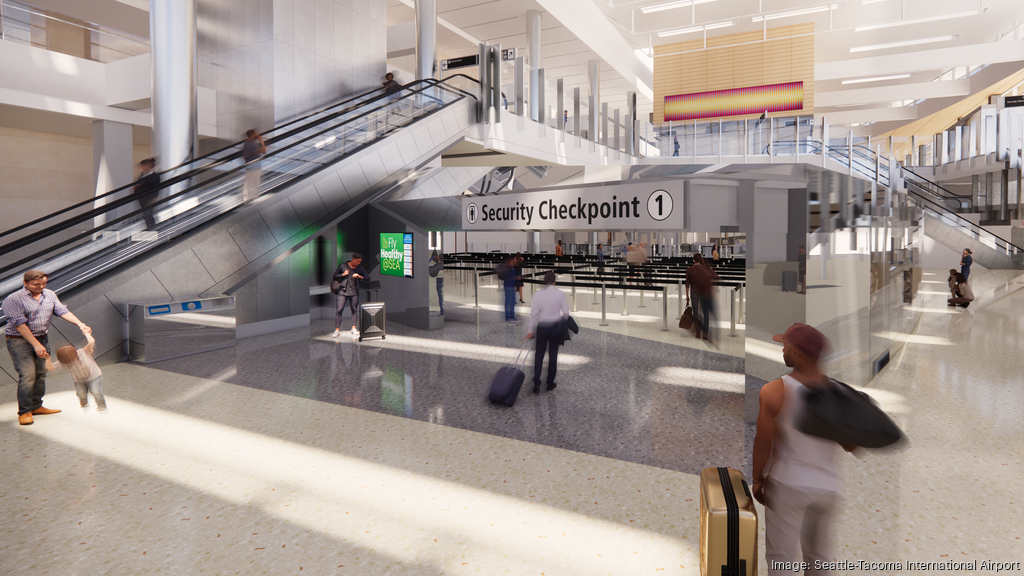![]()
The Port of Seattle plans to commit another $1.1 billion to its massive, rolling capital projects agenda at Seattle-Tacoma International Airport under its newly proposed budget for next year.
Introduced late last week, the budget sets the stage for $5.3 billion in capital spending over the next five years at Sea-Tac Airport, including several mega-projects in the early phases of design and construction. Because the capital projects plan looks five years ahead, the $1.1 billion allocation is for 2028.
Projects include the airport’s C Concourse expansion, the modernization of the south satellite terminal and a remodel of the north-end ticketing area in collaboration with Alaska Airlines.
“These are decades-long investments,” Arif Ghouse, the airport’s chief operating officer, told the Business Journal.
Also included are upgrades to Sea-Tac’s 75-year-old foundations as renovations continue on its sprawling, underground baggage handling infrastructure.
“You have to upgrade the whole facility as you go. That’s part of the challenge of doing these systems that are so complex on top of all the other activities that are going on at the airport,” Shah said.
In addition to the big-ticket projects, the plan includes more than 160 smaller projects aimed at speeding travelers through the airport and improving the customer experience, Port of Seattle Executive Director Stephen Metruck said.
The new budget, in addition to planning out projects through 2028, also aims to build in buffers for inflationary pressures, Metruck added.
“As these aviation and maritime gateways, a lot of these factors globally have the potential to impact us, so we are trying to be prudent going forward,” he said.
Priorities include approving items with long lead times and locking in pricing as early as possible to avoid cost increases, material shortages and delays.
The proposed budget is scheduled to go before the Port Commission for a first reading Nov. 14. It’s expected to be adopted later in the month.
The capital improvement plan is a “rolling” cashflow projection for the port, Ghouse said.
The spending projections come along with a projected 7.5% year-over-year increase in airport operating revenue to $860.9 million in 2024, while costs are expected to climb more quickly, up 9% to $502.4 million next year. The $717.6 million in planned capital spending next year represents an 8% increase over 2023.
Overall, the port plans to spend an average of $1 billion per year on infrastructure improvements through 2028.
Its increase in revenue comes as air traffic has returned near pre-pandemic levels, in addition to other recent airport improvements such as new parking, restaurants and retail.
